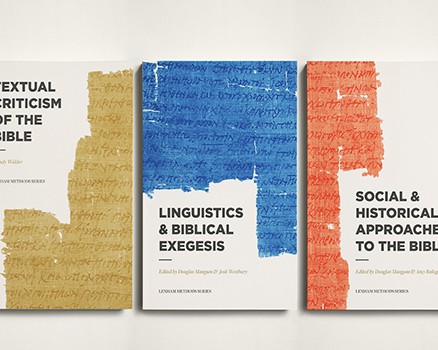Have you ever wondered why various versions of the Bible read differently? For example, why does Romans 8:1 in the King James Version include a phrase that’s not in the New American Standard Bible or the New International Version? Did it get added to one or left out of the others? You may look to the footnotes of your Bible to learn a little about these differences, but what you find is not enough to answer your real questions: Why are there differences? How do we know which choice is best?
A new book by Logos Bible Software answers these questions and helps you learn the basics of textual criticism, the process of analyzing and evaluating differences in the text of the Bible. Textual Criticism is the first volume in the Lexham Method Series, and there are four ways this bible study tool can help your Bible study. You will:
- Make sense of the textual footnotes in your Bibles. Many English Bibles include footnotes that say things like, “Some manuscripts do not include . . .” or “Dead Sea Scroll, Septuagint, Syriac, Vulgate; Masoretic Text ‘And it shall be.’” Textual Criticism will teach you how to decode and understand the significance of these notes.
- Understand the difficulty of producing a Bible translation. A new English translation of the Bible seems to come out every few years, and you might wonder how there can be so many translations of the same book. Textual Criticism will help you understand the decisions made by translation teams, and how these decisions affect the final product.
- Interact more intelligently with commentaries when they discuss textual issues. When you use commentaries in your Bible study, you encounter discussions about ways a particular text can be translated and why one reading is better than another. Commentators talk about Codex Vaticanus, the Peshitta, and the Dead Sea Scrolls—more language that needs decoding. Textual Criticism will teach you to understand the differences between the various manuscripts and decide when to trust one source over another.
- Learn to use your Logos software to do basic textual criticism on your own. In chapters 3 and 4 of Textual Criticism, you’ll work step by step through several passages in the Old and New Testaments that have textual issues. The examples will walk you through the process of textual criticism and show you how to use your Logos software to understand the significance of the Hebrew and Greek Bibles.
The Bible we have today has come to us through a long process that is unfamiliar to most Bible students. Textual Criticism helps you understand the basics of that process and navigate difficulties in the text. If you’re a serious student of the Bible, you need these tools to make the most of your study. Get the Lexham Methods Series today.






